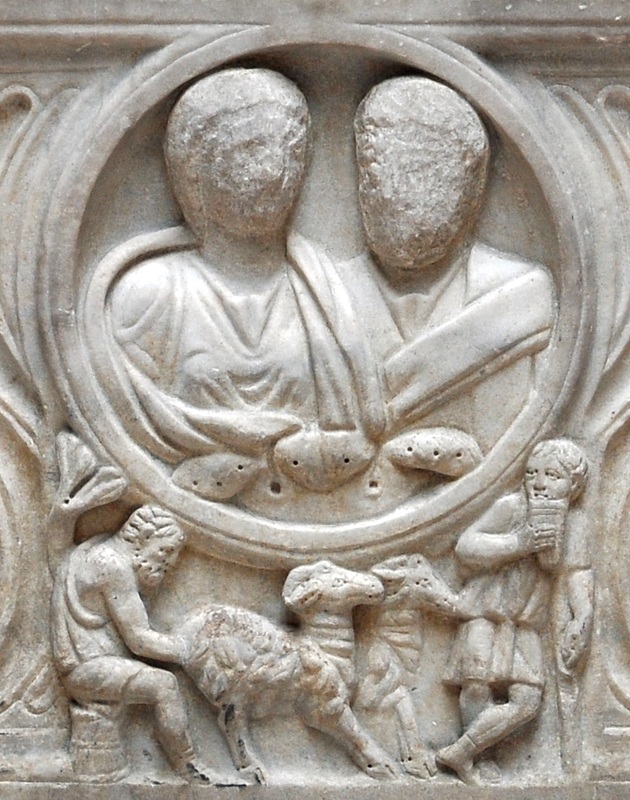|
The portraits of the deceased husband and wife who inhabited this Roman sarcophagus were never finished: their faces are blank. That's not very unusual, actually. What is unusual are the mushroom-like lumps poking out just underneath the busts. What are those things?
They must be the couple's preliminary and uncarved hands. But note that while these haven't yet been chiselled, they have been drilled: the perfectly round drill holes are unmistakable. This provides insight into the order of operations of a typical Roman workshop. The drill was used first, for initial indexing (in this case, to index the separation of the fingers). Only after this did the sculptor plan to turn to the chisel for further differentiation of the digits. This particular sarcophagus, however, was pressed into service before he had time to complete that next step — ensuring that our dead couple would remain not only faceless, but forever fingerless. EDIT: I have since been informed that what I took to be uncarved hands are more likely acanthus leaves, for which a handful of other pieces provide precedent. This must surely be right. Also notable is the vignette directly underneath the central tondo. It shows a marvelous bucolic scene: a seated shepherd helps a ewe give birth (!). James Herriot would be proud. But in a funerary context this motif would have carried extra resonance: the imminent birth of a lamb stands in counterpoise to the deceased couple directly above, insisting on life's continuity in the face of death.
Comments warmly invited.
(Both the Facebook system below, and the traditional comment form, work dandily.) |
Roman
|



